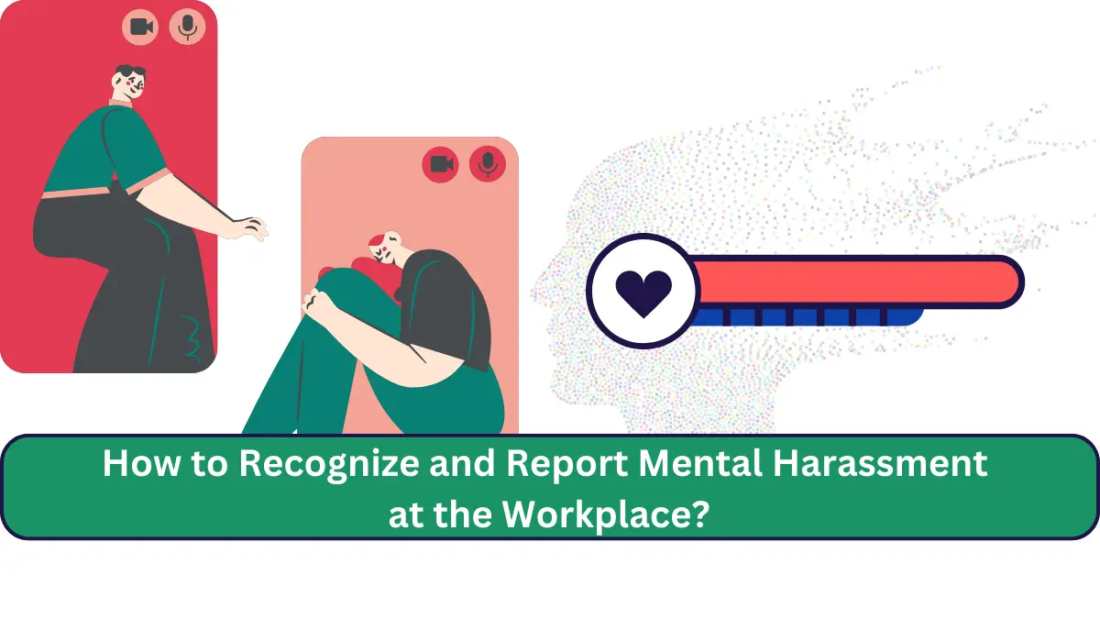In an intricate and dynamics corporate settings mental harassment in the workplace is a concerning issue that must be addressed. This article tries to clarify what mental harassment is, gives examples as to what constitutes mental harassment, provide guidance on recognition, and outline the steps to report and recover from the trauma associated with such workplace misconduct.
What is “Mental Harassment at Workplace”?
Any unwanted behaviour at the place of work, that interferes with an individual’s ability to perform their job or causes them psychological harm or emotional distress is referred to as mental harassment in the workplace. It can take many different forms, such as discrimination, bullying, intimidation, verbal abuse, and an overwhelming workload. It is imperative to identify and resolve mental harassment in order to preserve a positive and productive work environment.
Examples of What Constitutes Mental Harassment at Workplace
1. Continuously disparaging comments, taunts, or foul language is aimed at an employee.
2. There is persistent actions, intimidation, or threats that produce a hostile work atmosphere.
3. Experiencing injustice based on caste, race, religious, sexual orientation, and gender identities, among other protected characteristics.
4. Being assigned an excessive workload on purpose in order to induce burnout and stress.
5. Intentionally removing a worker from crucial conversations or team activities, which makes them feel isolated.
Examples of What Does Not Constitute as Mental Harassment at Workplace:
1. Constructive Feedback: Offering criticism to advance one’s career and skill set.
2. Reasonable Work Expectations: Determining a workload that fits the duties and job description.
3. Performance Expectations: Professionally conveying performance objectives and expectations.
4. Disciplinary Action: Dealing with policy infringements in a fair and uniform manner.
5. Professional Disagreements: Having constructive disagreements and debates in the workplace.
6. Performance Appraisals: Carrying out fair performance evaluations that highlight both areas of strength and room for development.
7. Workplace Pressure: Putting reasonable pressure on employees to accomplish goals or meet deadlines.
How to Recognize Mental Harassment at Workplace
1. Observable Behavioural Changes: Unexpected behavioural shifts, mood swings, or discernible deteriorations in productivity at work.
2. Excessive Stress: Persistent indications of anxiety, panic attacks, or stress associated with work environments.
3. Isolation: Withdrawing from professional networks, social interactions, and team activities by employees.
4. Physical Symptoms: Prolonged headaches, irregular sleep patterns, or other physical signs associated with stress.
5. Consistent disregard for the well-being of employees, as demonstrated by turning down requests for appropriate accommodations.
What to do to stop Mental Harassment at Workplace
1. Establish Boundaries: Make sure that everyone knows what your expectations are for polite behaviour.
2. Express Discomfiture: When confronted with inappropriate behaviour, politely voice your discomfort.
3. Document Instances: Make sure you keep a log of all the dates, times, and details of any instances of mental harassment.
4. Seek Support: For emotional support and direction, get in touch with friends, coworkers, or HR specialists.
5. Employ Business Resources: Learn about the policies and procedures the company has in place for dealing with harassment at work.
How to Report Mental Harassment at Workplace
1. Internal Reporting: Adhere to the internal reporting guidelines that are specified in the policies of your organization.
2. Document Everything: Give a thorough narrative of the events, backed up by any relevant documentation.
3. Consult HR: Ask the Human Resources division for advice on the best course of action.
4. Make use of Employee Assistance Programs (EAPs): A number of businesses provide private counselling and support to staff members who are having difficulties at work through EAPs.
How to Overcome the Trauma of Enduring Mental Harassment at Workplace
1. Seek Professional Assistance: To address the psychological impact, think about speaking with mental health professionals.
2. Create a Support System: You can share your experiences and look for advice from friends, family, or support groups.
3. Put an emphasis on self-care: Give self-care practices like exercise, meditation, and hobbies top priority.
4. Examine Your Legal Options: To learn more about your rights and possible legal paths, speak with legal experts.
5. Rebuild Confidence: By establishing little objectives and acknowledging accomplishments, you can gradually regain confidence.
Conclusion
A positive and productive work environment requires acknowledging and addressing mental harassment faced by the employees. It is employers’ duty to educate employees to identify the warning signs and take appropriate action to stop and deal with mental harassment. Assistance has to be offered to the victims by holding offenders responsible to create a safe and conducive work environment.
-By Adv. Deeksha Rai
 Cart is empty
Cart is empty 



